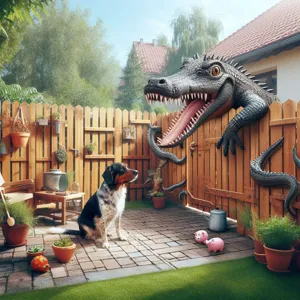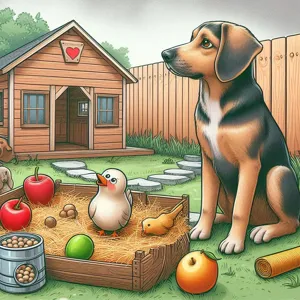In a world where distractions abound and time is often fleeting, few pleasures rival the immersive escape of a gripping book.
“page-Turners” is your gateway to a collection of the most captivating and suspenseful novels that will have you on the edge of your seat, turning pages late into the night. These are not just stories; they are intricate tapestries woven with unexpected twists, complex characters, and heart-pounding plots that linger in your mind long after the final page is turned. Whether you’re a seasoned thriller aficionado or a casual reader seeking your next obsession, this curated list promises to keep you guessing, your heart racing, and your imagination ignited. Join us as we explore the literary gems that will captivate your thoughts and leave you breathless, making every moment spent reading an exhilarating adventure.
1. Introduction: The Allure of Suspenseful Reads

Suspenseful reads have an undeniable allure that captivates readers, pulling them into a world where every page turn is steeped in anticipation and intrigue. There’s something uniquely thrilling about the tension that builds as you delve deeper into a story, your heart racing with every twist and turn, and your mind whirring with possibilities. Whether it’s the shadow of a lurking danger, a mystery begging to be solved, or characters with secrets that could upend everything, suspenseful books invite you to ponder, predict, and even feel a touch of anxiety as you wonder what will happen next.
These gripping narratives often weave together complex plots, rich character development, and unexpected revelations, ensuring that readers remain on the edge of their seats. The true magic lies in the author’s ability to craft a tale that keeps you guessing, leading you down one path only to twist and turn into another. As you immerse yourself in these stories, you may find yourself formulating theories, debating outcomes, and eagerly flipping pages late into the night, unable to resist the pull of the plot.
In this exploration of page-turners, we’ll uncover some of the most captivating and suspenseful books that promise to keep you guessing until the last line. Whether you’re a seasoned suspense aficionado or a newcomer to the genre, prepare to lose yourself in tales that defy expectations and ignite your imagination—because once you start, you won’t want to stop.
2. What Makes a Book a Page-Turner?
What makes a book a page-turner? The answer lies in a delicate balance of several key elements that come together to create an irresistible reading experience. First and foremost, compelling characters are essential. Readers are drawn into the story through characters who are relatable, flawed, and complex. These characters should evoke strong emotions, making readers care deeply about their fates. Whether they love them, hate them, or feel a mix of both, the connection to the characters propels the narrative forward.
Equally important is a gripping plot that keeps readers on the edge of their seats. A well-crafted plot is often characterized by unexpected twists, high stakes, and a relentless pace. The use of cliffhangers at the end of chapters can create suspense and encourage readers to forge ahead, unable to resist the urge to find out what happens next. This element of surprise—whether through shocking revelations or intricate plot developments—ensures that readers are constantly guessing and re-evaluating their assumptions.
Moreover, atmospheric writing can significantly enhance the reading experience. Vivid descriptions and immersive settings allow readers to feel as if they are part of the story, heightening their emotional investment. The author’s ability to create a sense of urgency or foreboding through their prose is a powerful tool that can turn an ordinary story into a mesmerizing journey.
Finally, thematic depth can elevate a book from merely entertaining to profoundly engaging. When a narrative delves into complex themes—such as morality, identity, or the human condition—it resonates with readers on a deeper level, prompting them to reflect long after they’ve turned the last page.
In essence, a true page-turner weaves together compelling characters, a suspenseful plot, atmospheric writing, and meaningful themes, creating a tapestry of narrative that captivates readers and keeps them guessing until the very end.
3. Classic Suspense Novels You Can’t Miss

When it comes to suspenseful storytelling, few genres have mastered the art of tension and intrigue like the classic suspense novel. These timeless works have stood the test of time, captivating readers with their intricate plots, compelling characters, and unexpected twists. If you’re looking to immerse yourself in a gripping narrative that will keep you on the edge of your seat, here are some quintessential classic suspense novels that you simply can’t miss.
**1. “And Then There Were None” by Agatha Christie**
Agatha Christie, the queen of mystery, delivers one of her most ingenious plots in “And Then There Were None,” where ten strangers are invited to a remote island under false pretenses. As they begin to disappear one by one, paranoia mounts, and trust erodes, leaving readers guessing who the murderer might be — or if anyone will survive. Christie’s masterful use of red herrings and the chilling atmosphere make this a must-read for any suspense lover.
**2. “The Turn of the Screw” by Henry James**
A haunting tale that blurs the lines between reality and imagination, Henry James’s “The Turn of the Screw” follows a governess tasked with caring for two children at a remote estate. As she becomes increasingly convinced that the estate is haunted by malevolent spirits, the tension escalates, leaving readers questioning the reliability of her perspective. The story’s ambiguous nature and psychological depth keep readers pondering long after the final page.
**3. “Rebecca” by Daphne du Maurier**
Daphne du Maurier’s “Rebecca” is a gothic masterpiece that explores themes of jealousy and identity. The story unfolds through the eyes of an unnamed narrator who marries a wealthy widower, only to find herself haunted by the memory of his first wife, Rebecca. As the new Mrs. de Winter navigates the eerie atmosphere of Manderley, secrets are revealed, and the suspense builds to a breathtaking climax. Du Maurier’s lush prose and intricate character development make this novel an unforgettable journey into the heart of suspense.
**4. “The Hound of the Baskervilles” by Arthur Conan Doyle**
No list of classic suspense novels would be complete without Sherlock Holmes. In “The Hound of the Baskervilles,” Conan Doyle combines elements of mystery and horror as Holmes investigates the legend of a supernatural hound that haunts the Baskerville family. With its atmospheric setting on the English moors and a plot full of deception and danger, this novel is a brilliant example of how suspense can intertwine with folklore to create an unforgettable reading experience.
Each of these classic suspense novels offers a unique blend of tension, intrigue, and unforgettable storytelling. Whether you’re revisiting these timeless tales or discovering them for the first time, prepare to be enthralled and kept guessing until the very last page. Grab a cozy blanket, settle into a comfy chair, and let the suspense pull you in!
4. Contemporary Thrillers That Will Keep You on the Edge of Your Seat
If you’re a fan of nail-biting suspense and psychological twists, contemporary thrillers are the perfect genre to dive into. These gripping narratives weave intricate plots that not only entertain but also challenge your intellect, leaving you guessing with every turn of the page.
Imagine this: You’re curled up on your couch, the world around you fading away as you plunge into a modern thriller filled with unexpected revelations and morally complex characters. Each chapter builds tension, drawing you deeper into a web of deceit, betrayal, and high-stakes drama. Contemporary thrillers expertly blend fast-paced action with rich character development, ensuring that you are not only invested in the plot but also in the lives of the characters.
Take, for instance, the works of authors like Gillian Flynn and Paula Hawkins, whose novels masterfully explore the darker sides of human nature. Flynn’s *Gone Girl* delves into the intricate dynamics of a seemingly perfect marriage that spirals into chaos, forcing readers to question the reliability of every character. Hawkins’ *The Girl on the Train* takes you on a psychological journey, where the lines between truth and deception blur, and every perspective adds another layer to the mystery that unfolds.
These stories are meticulously crafted, often incorporating social commentary that resonates with contemporary issues, making them feel all the more real. Whether it’s the chilling atmosphere of a crime-ridden city, the claustrophobic tension of a family home, or the eerie silence of a remote cabin, the settings in these thrillers heighten the sense of urgency and suspense.
As you turn each page, you’ll find yourself racing against the clock, piecing together clues, and trying to stay one step ahead of the plot twists. With every revelation, you’ll be left questioning not just the fate of the characters, but your own assumptions about trust and truth. So, if you’re ready for an adrenaline-pumping reading experience that will keep your heart racing and your mind engaged, grab one of these contemporary thrillers and prepare to be captivated until the very last page.
5. Psychological Thrillers: The Mind Games of Fiction

Psychological thrillers have a unique ability to ensnare readers in a web of intrigue, creating an emotional and intellectual tug-of-war that keeps them guessing until the very last page. These novels delve deep into the complexities of the human mind, exploring themes of deception, obsession, and the thin veneer that separates sanity from madness. With every twist and turn, they challenge readers to question the motives and reliability of their characters, inviting them to embark on a journey filled with tension and uncertainty.
Imagine sinking into the pages of a psychological thriller where the protagonist grapples with their own fractured psyche, unraveling clues that reveal buried secrets and dark truths. Each chapter is meticulously crafted to build suspense, often culminating in shocking revelations that leave you breathless. Authors skillfully manipulate narrative perspective, leading you to empathize with unreliable narrators or pit you against clever antagonists who seem always one step ahead.
These novels are not just about what happens but rather about the intricate dance of the mind. The labyrinthine plots often mirror the characters’ mental states, creating an atmosphere thick with suspense and unpredictability. The sensation that you’re always on the verge of uncovering a hidden truth keeps you glued to the pages, while the unsettling sense that nothing is quite what it seems adds an extra layer of tension.
Whether it’s a solitary detective chasing down a twisted serial killer, a woman trapped in a manipulative relationship, or a seemingly perfect family harboring dark secrets, each story immerses you in a world where trust is a luxury and every character has something to hide. As you navigate through the psychological minefield, you’ll find yourself racing to the finish, desperate to solve the puzzle and uncover the truth.
In the realm of psychological thrillers, the stakes are high, and every revelation leads to another question. If you’re ready for a reading experience that will keep your heart racing and your mind whirring, these captivating narratives are sure to deliver a rollercoaster of emotions that will linger long after you’ve turned the final page.
6. Mystery Novels with Twists You Never Saw Coming
When it comes to mystery novels, the allure lies in their ability to keep readers on the edge of their seats, constantly guessing and second-guessing their theories. The best mystery novels are those that expertly weave intricate plots with unexpected twists, making each revelation feel both shocking and inevitable. These books offer a thrilling ride, with layers of deception that will keep your mind racing long after you’ve turned the last page.
Imagine diving into a narrative where every character feels like a potential suspect, and every clue seems to lead you down a different path. One moment you think you have it all figured out, only to be blindsided by a twist that turns the entire story on its head. These twists are not just mere surprises; they are cleverly crafted elements that reveal the author’s skill in misdirection and foreshadowing.
Take, for instance, the gripping tale of “The Girl on the Train” by Paula Hawkins, where the intricacies of its unreliable narrators pull you deeper into a web of secrets that unravels in the most unexpected ways. Or consider “Gone Girl” by Gillian Flynn, a masterclass in psychological manipulation, where the shocking twists leave you questioning everything you thought you knew about love and betrayal.
These novels are not just about the destination; they are about the journey of unraveling the mystery. With each chapter, you’ll find yourself piecing together the puzzle, only to realize that the pieces you thought fit perfectly might belong to a completely different picture. As you navigate through red herrings and false leads, the suspense builds, culminating in climactic moments that will leave you breathless.
If you’re on the hunt for books that will challenge your deductive skills and keep you guessing until the final sentence, look no further. Dive into these mystery novels filled with twists that will keep you turning pages late into the night, eager to uncover the truth lurking beneath the surface. Whether you’re a seasoned mystery aficionado or a casual reader, these captivating stories promise an unforgettable reading experience, one that will linger in your thoughts long after you’ve closed the book.
7. Best-Selling Page-Turners of the Last Decade

When it comes to literary engagement, few things rival the thrill of a best-selling page-turner. Over the last decade, a slew of gripping novels has captured the hearts and minds of readers around the globe, weaving intricate plots that leave you breathless with anticipation. These books have not only topped the charts but have also sparked countless discussions and fan theories, making them essential reads for any suspense aficionado.
One standout is **“The Girl on the Train” by Paula Hawkins**. This psychological thriller immerses readers in the tangled lives of its characters, with each twist revealing a new layer of deceit and desperation. Hawkins masterfully crafts an unreliable narrator whose perspective keeps you questioning reality, making it impossible to put the book down until the final shocking revelation.
Another unforgettable title is **“The Silent Patient” by Alex Michaelides**. This chilling tale follows a psychotherapist determined to uncover the truth behind a woman’s act of violence against her husband. The narrative unfolds with a haunting quality, leading to a jaw-dropping twist that redefines everything you thought you knew about the characters involved. The meticulous build-up and psychological depth ensure that readers will be glued to each page, desperate for answers.
**“Big Little Lies” by Liane Moriarty** also deserves a mention, blending humor and heartbreak within its exploration of domestic life and the secrets that lurk beneath the surface. The intertwining stories of its strong female protagonists create a compelling narrative that is both relatable and thrilling, culminating in a dramatic climax that will keep you guessing until the very last chapter.
These best-selling page-turners are just a glimpse into the rich tapestry of stories that have emerged over the last decade. Their ability to captivate audiences and spark conversations is a testament to the artistry of contemporary storytelling. Whether you’re a seasoned reader or new to the genre, these novels are sure to deliver the suspense and intrigue that will keep you turning the pages long into the night.
8. Underrated Gems: Hidden Suspense Stories Worth Discovering
In the vast landscape of literature, some suspenseful tales remain hidden beneath the surface, waiting to be unearthed by those adventurous enough to seek them out. These underrated gems are like well-kept secrets, offering gripping plots and unexpected twists that can rival even the most popular thrillers.
Take, for instance, “The Weight of Blood” by Tiffany D. Jackson, a masterful blend of horror and suspense that draws from the classic tale of “Carrie.” Set in a contemporary high school, this story weaves a haunting narrative that explores race, bullying, and the heavy burden of secrets. Jackson’s skillful storytelling keeps readers on the edge of their seats, questioning the boundaries of friendship and the lengths one might go to escape their past.
Another hidden treasure is “The Good Daughter” by Karin Slaughter, which combines family drama with a chilling mystery. The plot revolves around two sisters whose lives are irrevocably altered by a brutal crime in their hometown. With Slaughter’s signature sharp prose and intricate character development, this novel delves deep into the complexities of trauma, loyalty, and the shadows of the past, ensuring that readers are left guessing until the very last page.
For those who relish a psychological twist, “In the Woods” by Tana French is a must-read. This novel follows detective Rob Ryan as he investigates a young girl’s murder in a small Irish town that is eerily linked to his own childhood. French’s atmospheric writing and layered narrative create a palpable tension that keeps readers engrossed as they navigate the labyrinth of Ryan’s memories and the unsettling mystery unfolding before him.
These hidden suspense stories not only provide thrilling experiences but also offer fresh perspectives on the genre. By exploring these underrated gems, readers can discover new favorites that linger in their minds long after the last page is turned. So, if you’re looking to shake up your reading list, dive into these captivating tales that promise to keep you guessing and craving more.
9. The Role of Character Development in Creating Suspense
Character development plays a pivotal role in crafting suspenseful narratives that keep readers on the edge of their seats. When authors breathe life into their characters, they don’t just create mere figures on a page; they forge complex personalities whose motivations, fears, and desires resonate deeply with readers. This emotional investment is crucial—when readers care about the characters, the stakes feel infinitely higher.
Imagine a thriller where the protagonist is a seasoned detective with a troubled past. As the pages turn, we learn about their internal conflicts, relationships, and vulnerabilities. This depth not only makes the character relatable but also intensifies the suspense. Each decision they make is laden with the weight of their backstory, and readers find themselves questioning: Will they overcome their demons in time to solve the case?
Moreover, well-crafted antagonists add another layer of tension. A villain with a compelling backstory can evoke both fear and sympathy, complicating the reader’s emotional response. When readers understand the antagonist’s motivations, it raises the stakes of the conflict—can the hero truly outsmart someone with such a profound understanding of human nature?
The pacing of character revelations also plays a critical role in suspense. Authors can strategically unveil details about a character’s past or hidden agendas, creating a sense of intrigue that keeps readers guessing. As new layers are peeled away, the suspense builds, leading to moments of shock and revelation that can change everything in an instant.
In essence, character development transcends mere plot mechanics; it serves as the heartbeat of suspenseful storytelling. By investing time in creating multidimensional characters, authors can weave a rich tapestry of tension and uncertainty that hooks readers from the very first page, compelling them to turn each page in eager anticipation of what comes next.
10. How Setting and Atmosphere Enhance Tension
The setting and atmosphere of a story play a crucial role in building tension and enhancing the overall suspense. From the eerie silence of a fog-laden moor to the claustrophobic confines of a dimly lit basement, the environments authors create serve as more than mere backdrops; they become characters in their own right, influencing the mood and guiding readers’ emotions.
Imagine a small, isolated town where every creak of the floorboards echoes like a warning bell, or a sprawling mansion filled with hidden passageways and dark secrets. These meticulously crafted settings immerse readers in a world where danger lurks around every corner, keeping them on edge and fully engaged in the narrative. The atmosphere can evoke fear, anticipation, or even a sense of foreboding, making readers acutely aware of the stakes at play.
For instance, in a psychological thriller, the oppressive atmosphere of a character’s mind can mirror the physical setting, creating a dual layer of suspense. As the protagonist grapples with internal demons amidst an unsettling environment, the tension amplifies, leaving readers guessing about what horrors lie ahead.
Moreover, authors skillfully manipulate sensory details—sounds, sights, and even smells—to heighten the emotional experience. The distant howl of wind, the flicker of a candle, or the faint scent of decay can all serve as ominous signals that something is amiss. By weaving these elements together, writers create a palpable tension that grips readers from the very first page to the last, ensuring that they remain utterly captivated and eager to unravel the mysteries that unfold.
In essence, setting and atmosphere are not just backdrops for action; they are integral components that enhance the suspenseful experience, making each twist and turn all the more exhilarating. Whether nestled in a cozy armchair or tucked into bed, readers will find themselves entranced, unable to put the book down until the final, heart-pounding revelation is revealed.
11. Tips for Finding Your Next Page-Turner
Finding your next page-turner can be an exhilarating journey in itself, one that transforms a simple reading experience into a captivating adventure. To uncover those stories that will keep you guessing until the very last page, consider these effective tips:
1. **Dive Into Recommendations**: Start by asking friends, family, or fellow book lovers for their favorite suspenseful reads. Personal recommendations often lead to hidden gems that may not be on the bestseller lists.
2. **Explore Online Communities**: Platforms like Goodreads, Reddit, or specialized book blogs can offer tailored suggestions. Join book clubs or forums dedicated to thrillers and suspense novels, where passionate readers share their insights and reviews.
3. **Sample Before You Commit**: Many online retailers allow you to read a sample of the book before purchasing. Take advantage of this feature to get a feel for the writing style and plot. If the opening lines grab you, it’s a good sign that you’re in for an engaging ride.
4. **Follow Authors You Love**: If you’ve read and enjoyed a particular author’s work, keep an eye on their upcoming releases. Many authors have a knack for crafting suspenseful plots, and if you loved one book, chances are you’ll enjoy their other titles as well.
5. **Check Out Awards and Lists**: Look for books that have won literary awards or appeared on “must-read” lists. Titles featured in such categories often possess the qualities of a true page-turner, with gripping narratives and well-developed characters.
6. **Read the First Few Pages**: When browsing in a bookstore or library, pick up a book and read the first few pages. Does it pull you in? Is there an intriguing question posed or a mysterious situation introduced? The initial hook is often a strong indicator of a captivating story.
7. **Mix Genres**: Don’t hesitate to explore mystery novels that blend with other genres, such as psychological thrillers, historical fiction, or even contemporary romance. These cross-genre stories often offer fresh perspectives and unexpected twists that can enhance your reading experience.
By employing these strategies, you’ll not only find books that keep you on the edge of your seat but also cultivate a deeper relationship with literature that continuously surprises and excites you. So grab that next page-turner and prepare for a rollercoaster of suspense that will keep you guessing until the very last page!
12. Author Spotlights: Writers Who Master Suspense
When it comes to crafting stories that keep readers on the edge of their seats, few authors have perfected the art of suspense quite like the following masters. Each of them has a unique style and approach to storytelling, yet they all share a common thread: the ability to weave intricate plots that leave readers guessing until the very last page.
**Gillian Flynn** is a name that frequently comes to mind. Her psychological thrillers, notably *Gone Girl*, delve deep into the complexities of human relationships, painting vivid portraits of flawed characters whose motives are shrouded in mystery. Flynn’s sharp prose and unexpected twists make her narratives not just suspenseful, but also deeply engaging, leaving readers questioning their own perceptions of truth and deception.
**Harlan Coben** is another titan in the realm of suspense. Known for his ability to blend ordinary life with extraordinary danger, Coben’s novels often begin with a seemingly benign premise that spirals into shocking revelations. His knack for cliffhangers and the art of misdirection ensures that readers remain hooked, eagerly turning pages to uncover the next twist in the tale.
**Tess Gerritsen**, a former doctor turned bestselling author, skillfully combines medical knowledge with thrilling crime narratives. Her *Rizzoli & Isles* series not only explores chilling mysteries but also delves into the psychology of its characters. Gerritsen’s meticulous attention to detail and compelling storytelling create a palpable tension that grips readers from start to finish.
Finally, we can’t overlook **Stephen King**, the master of suspense in all its forms. With a career spanning decades, King has penned a multitude of novels that range from supernatural horror to deeply human dramas. His ability to build suspense through character development and atmospheric settings makes his stories unforgettable, often leaving readers with lingering questions long after the last page is turned.
These authors, with their unique voices and gripping narratives, prove that suspense is not just about shocking twists, but about the intricate dance of character, plot, and emotion. As you dive into their works, prepare for a rollercoaster of tension and intrigue that will undoubtedly keep you guessing until the very end.
13. Reader Reviews: What Fans Are Saying About These Books
When diving into the world of captivating and suspenseful literature, there’s no better gauge of a book’s impact than the voices of its readers. The excitement and tension woven into the pages of these stories resonate deeply, and fans are quick to share their thoughts—and their enthusiasm—through reviews.
For instance, one reader passionately remarked about a particular thriller, “I could not put this book down! Every twist left me breathless, and I never saw the ending coming!” Such sentiments echo across social media platforms, where book clubs and avid readers come together to dissect and discuss plot twists and character developments.
Another fan expressed their admiration for a psychological drama, stating, “The author has a gift for creating characters that linger in your mind long after you’ve turned the last page. I found myself questioning everything, even my own assumptions!” This level of engagement speaks to the profound connection that these books forge with their audience, inviting them to not only read but to ponder and reflect.
Additionally, many reviews highlight the unique styles of storytelling that keep readers on the edge of their seats. Comments like, “The pacing was perfect, and I loved how the suspense built up gradually,” reveal how crucial narrative structure is in creating that irresistible urge to keep reading.
As you explore reader reviews, you’ll discover a vibrant tapestry of opinions that reflect the diverse ways these books capture hearts and minds. Whether it’s the nail-biting suspense or the intricately woven plots, fans are eager to share their experiences, adding to the allure of these page-turners. So, as you embark on your next reading adventure, consider the insights and excitement from fellow readers—they might just lead you to your next favorite book!
14. Conclusion: The Joy of Losing Yourself in a Captivating Story
In a world overflowing with distractions, there’s something profoundly magical about diving into a captivating story that immerses us completely. The joy of losing yourself within the pages of a thrilling novel lies not only in the plot twists and heart-racing suspense but also in the rich tapestry of characters and settings that transport us to different realms. As we turn each page, we become entwined in the lives of protagonists, sharing their triumphs, fears, and moments of uncertainty, which keeps us eagerly guessing until the very last word.
The thrill of a well-crafted book is akin to an exhilarating rollercoaster ride; it takes us on unexpected journeys, teasing our minds with subtle clues and red herrings that challenge our deductive skills. From the foreboding atmosphere of a gothic mystery to the intricate layers of a psychological thriller, these narratives stimulate our imagination and awaken our innate curiosity. We become sleuths in our own right, piecing together fragments of information and racing toward the conclusion, often with our hearts pounding in anticipation.
Ultimately, the joy of these page-turners transcends mere entertainment. They remind us of the power of storytelling—how a well-told tale can evoke emotions, provoke thoughts, and inspire conversations long after we’ve closed the book. So, whether you’re nestled in a cozy nook or enjoying a quiet evening under the stars, allow yourself the indulgence of getting lost in a story. Embrace the suspense, relish the mystery, and let the world of fiction captivate you until the final page turns.
15. Bonus: Recommended Reading Lists for Different Tastes in Suspense
When it comes to suspenseful literature, not all readers are cut from the same cloth. Some crave psychological thrillers that delve into the complexities of the human mind, while others prefer edge-of-your-seat action or supernatural mysteries that blur the line between reality and the unknown. To cater to these diverse preferences, we’ve curated a selection of recommended reading lists that will satisfy every suspense aficionado.
**For Psychological Thriller Enthusiasts:** Dive into the intricate webs woven by authors like Gillian Flynn in *Gone Girl*, where deceit and obsession collide. Sarah Pinborough’s *Behind Her Eyes* offers a mind-bending twist that will leave you questioning everything you thought you knew about trust and betrayal.
**For Action Lovers:** If heart-pounding action is your forte, look no further than Lee Child’s *Jack Reacher* series, where every turn leads to unexpected danger. James Patterson’s *Alex Cross* novels are also a must-read for those who thrive on relentless pacing and gripping plots that never let up.
**For Supernatural Suspense Seekers:** Explore the eerie and uncanny with Stephen King’s *The Shining*, a masterclass in building dread and atmospheric tension. Tana French’s *In the Woods* combines psychological depth with a haunting mystery that will linger long after the last page is turned.
**For Cozy Mystery Fans:** If you prefer your suspense served with a side of charm, try *The No. 1 Ladies’ Detective Agency* by Alexander McCall Smith, where the clever and resourceful Precious Ramotswe solves mysteries with warmth and wit. Agatha Christie’s *Murder on the Orient Express* is a classic that offers an intricately plotted whodunit, perfect for those who enjoy piecing together clues in a cozy setting.
These recommended reading lists are just a starting point. Each title promises to keep you guessing and enthralled, ensuring that you’ll never want to put the book down. With so many captivating options, you’re bound to find something that aligns perfectly with your suspenseful cravings, making your next reading adventure one to remember.
As we wrap up our exploration of the most captivating and suspenseful books that keep readers on the edge of their seats, we hope you’ve discovered some thrilling new titles to add to your reading list. Each of these page-turners is crafted with intricate plots, unforgettable characters, and tantalizing twists that will leave you guessing until the very last page. Whether you’re curling up on the couch or seeking an exhilarating read for your next vacation, these books promise to deliver an unforgettable journey filled with suspense and intrigue. So grab your favorite cozy blanket, a warm cup of tea, and dive into these literary gems—your next great escape awaits! Happy reading!









